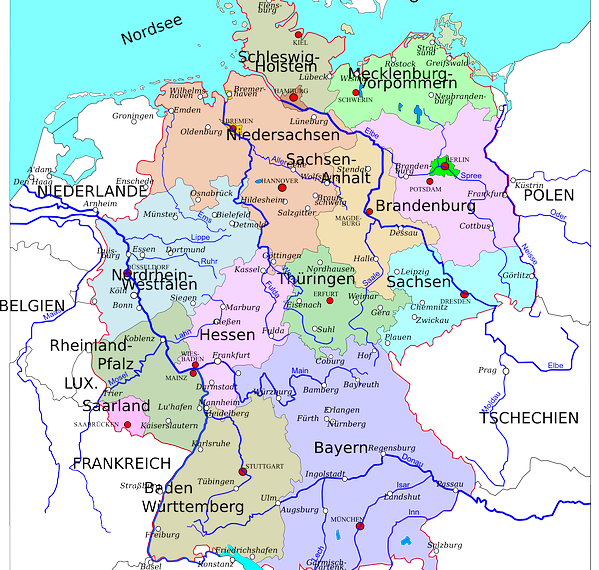by Leonid Bershidsky, Bloomberg Opinion
Opponents of the U.S. congressional Democrats’ Green New Deal point to Germany as an example of a country where similar policies have backfired. They should take a closer look; the U.S. could do well to imitate Europe’s largest economy.
Here’s how the case against Germany goes: Despite a sustained effort to boost sustainable sources of energy, carbon emissions haven’t fallen in recent years because the country hasn’t been able to kick its coal dependence. At the same time, renewables subsidies have helped to drive up energy bills to make them the highest in Europe, hurting business competitiveness and consumers.
Though the numbers in this argument are correct, the picture is far more complex, all the more so because of Chancellor Angela Merkel’s impulsive decision to phase out nuclear energy after the 2011 Fukushima nuclear disaster and the fraught geopolitics of natural gas supplies.
For Germany, though, higher prices have been more of a blessing than a curse. They have helped transform Germany into the world’s most energy-efficient economy. It has also remained one of the world’s most competitive, in part because it adapted to higher energy costs.
Germany tied with Italy for the top spot in the latest International Energy Efficiency Scorecard. The benchmark, produced by the American Council for an Energy-Efficient Economy, a green lobby group, ranks countries by energy use and policy efficiency. The U.S. came 11th out of the 25 nations ranked, behind even China.
One can argue that complex methodologies like this, which include many qualitative indicators, are highly subjective. But on the absolute numbers, Germany is indeed far ahead of the U.S.
The country’s economy is more efficient in its use of power: It was only 65 percent as energy-intensive as the U.S. in 2017, according to the Global Energy Statistical Yearbook.
That doesn’t quite level out the energy price differential between the U.S. and Germany — where power is two and a half times more expensive — but it helps put things in perspective and explain why the U.S. produces 64 percent more carbon dioxide emissions per person, despite Germany’s coal habit.
German families use about 73 percent as much energy per square foot in their homes as their U.S. counterparts, according to official data from both countries. If your electricity bill is high, the European Union’s rapid phasing-out of incandescent and halogen light bulbs makes sense; in the U.S., 71 percent of homes were still using incandescent bulbs in 2015. For consumers, it also helps to pay heed to the “energy passports” prominently displayed on household devices sold in Europe and choose more efficient models; Germans do.
The mammoth task of making all buildings more energy efficient — yes, all, just like the Green New Deal says — hasn’t cowed the authorities in Europe. The German Energy Agency calculates that to make the country’s building stock almost carbon-neutral by 2050 about 1.4 percent of buildings a year will need to be refurbished; the current rate is about 1 percent, so the goal looks ambitious, but not unattainable.
As for businesses, the effect of high prices on their competitiveness is greatly exaggerated. In 2016, Karsten Neuhoff of the German Institute for Economic research calculated that energy costs account for just 1.6 percent of the total costs of enterprises producing 98 percent of the European Union’s economic output.
The companies that generate the remaining 2 percent of GDP are in energy-intensive industries that produce aluminum, steel, cement, paper and other materials. Germany, admittedly, isn’t a great place for these businesses, but high energy prices haven’t prevented firms from developing competitive advantages elsewhere — especially in industries where competition is based on quality and complexity rather than price.
According to a 2018 study by the World Economic Forum, Germany is the world’s third most competitive economy after the U.S. and Singapore. If that scorecard includes too many qualitative assessments, then note that Germany has the biggest trade surplus in the world, while the U.S. is perpetually worried about its deficit.
High energy prices have helped to drive the German economy away from energy-intensive production and toward industries with more added value. That’s reflected in the employment dynamics of the energy industry itself.
Between 2000 and 2016, employment in the German energy sector dropped insignificantly, to 358,200 people from 372,200. But more than a third of the workers are now involved in renewable energy and bioenergy, compared with fewer than 10 percent in 2000; the new jobs, as a rule, pay more than the old ones.
Building up more complex industries is important for the social part of any Green New Deal because they create better jobs for workers than commodity industries that can only compete on price. Germany already outperforms the U.S. on job-quality and job-security indicators.
Simplistic arguments about the U.S. Green New Deal can’t scratch the surface of Germany’s complex experience. On balance, Germany’s Energiewende, or low carbon transition policy, is helping rather than hurting one of the world’s most flexible, agile and efficient economies. U.S. lawmakers would do well to study it before pooh-poohing the Democrats’ proposal.





